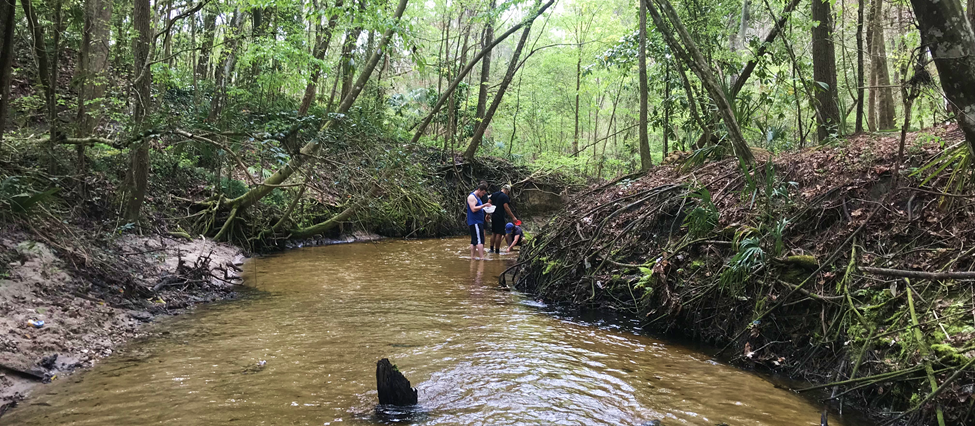Editor’s Note: Kyle W. Bostick is a Ph.D. candidate at the University of Florida’s Department of Geological Sciences studying the biogeochemistry of fire-derived organic matter. His interests in paleontology stem from his early years collecting invertebrate fossils in Southwest Florida. In addition to his doctoral research, K.W. Bostick has taught “GLY1150L: Florida Geology” at the University of Florida.

Over the last three years, I have taught “Florida Geology (GLY 1150L)”, a single-credit geology course in the Department of Geological Sciences at the University of Florida (UF). One of the best parts of this course is it gives students a completely new geological perspective on the Sunshine State. The course takes a hands-on approach, relying heavily on 1) field trips to local geologic features, and 2) laboratory exercises using field-collected samples from these trips. While this course has existed for more than 18 years, we are actively improving its curriculum and relevancy by using modern teaching tools such as myFOSSIL.org.
After learning the basics of stratigraphy and Florida’s geologic history (in the first 4 weeks of class), the students arrive at what is usually their favorite part of the curriculum, paleontology. Equipped with plastic bags and pasta strainers, we trekked to Hogtown Creek and Three Lakes Creek in Gainesville, FL with the mission of collecting a wide variety of Miocene (5.3–23 million years ago) shark and ray teeth.


The fossils found in the Gainesville creeks perfectly illustrate the low energy coastal depositional environment of Florida during the Miocene. At this point in the curriculum, the students have learned about coastal depositional environments of the Hawthorn Group and Florida’s geologic history, but nothing drives home the message like seeing marine fossils more than 50 miles inland (e.g., shark/ray teeth, whale vertebrae, corals, foraminifera, etc.). After the collection trip, students are responsible for identifying, characterizing, and preparing a report of their shark teeth. Students are taught to use myFOSSIL and the Florida Museum of Natural History Paleontology Databases as quick fossil identification tools. This lab exercise involves measuring the vertical tooth height of shark teeth, ranking preservation, pooling class findings (to increase sample size), and characterizing the class fossil set using basic statistics. Students are also prompted to sign up for myFOSSIL to post two fossils they found on the trip. From here, we compare our findings to those found in our area by other amateur paleontologists.
Several other GLY1150L instructors have adapted this lab exercise for their classroom. Over the last three years, the lab exercise has been responsible for approximately 500 Gainesville fossils in myFOSSIL’s eMuseum. In addition, many of these students are actively engaged with myFOSSIL after the end of the curriculum. Not only do students get to use myFOSSIL as a great resource, but they also enjoyed being able to contribute to our ever-growing eMuseum.